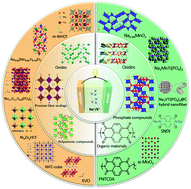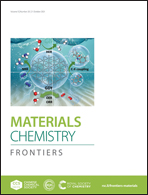Recent progress in electrode materials for aqueous sodium and potassium ion batteries
Abstract
Due to their safety, environmental benignity, and affordability, aqueous sodium/potassium-ion batteries (ASIBs/APIBs) have attracted increasing attention as promising candidates for large-scale stationary energy storage systems. Nevertheless, the practical applications of ASIBs/APIBs are hindered by their poor cyclability and low efficiency, which are mainly caused by the narrow thermodynamic voltage window and (electro-)chemical instability of electrode materials in aqueous electrolytes. Therefore, recent research is focused primarily on searching for new electrode materials and understanding their fundamental aqueous reaction mechanisms. This review presents the recent advances in novel electrode materials of ASIBs/APIBs, the operation mechanism of representative materials, and new findings based on the preparation and modification approaches. The redox potentials of typical cathode and anode materials used in ASIBs/APIBs, in comparison with the electrochemical stability window of aqueous electrolytes, are summarized. Brief discussions on future opportunities and challenges in this field are further presented at the end. We hope that this review will be helpful for designing high-performance ASIBs/APIBs and stimulate more research progress.

- This article is part of the themed collection: 2021 Materials Chemistry Frontiers Review-type Articles


 Please wait while we load your content...
Please wait while we load your content...